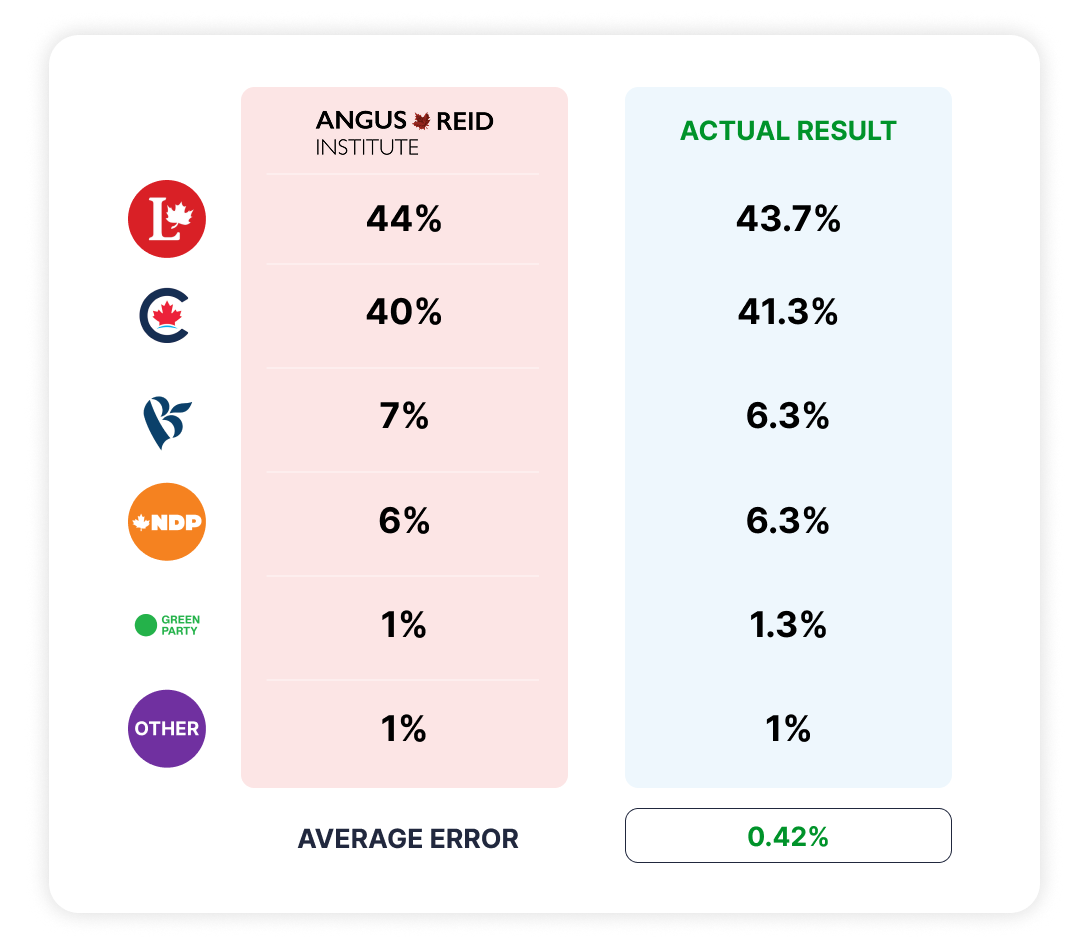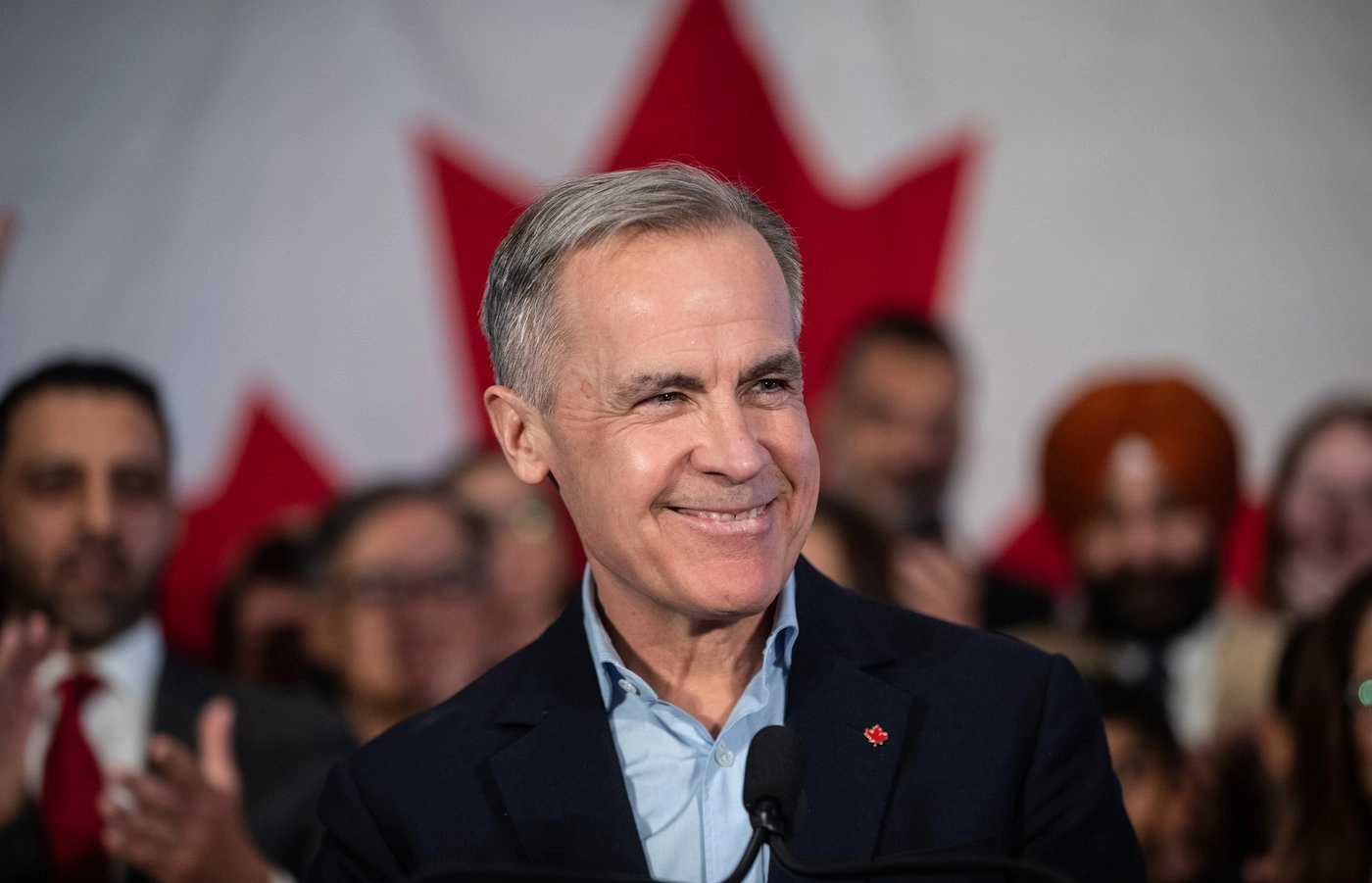As votes were counted in this week’s federal election, one thing became clear: the Angus Reid Institute’s polling program delivered one of the most accurate forecasts of the campaign—not just nationally, but provincially, too.
Their final projection had the Liberals at 44% and the Conservatives at 40%. The result? 43% and 41%. A statistical bullseye.
In British Columbia and Quebec, their regional numbers matched the final tallies almost perfectly. In the Prairies, the Conservatives performed slightly better than projected, but still within the range of our forecasted lead. And while our projection for Ontario slightly underestimated the Conservative share (especially in the 905 region), the overall accuracy of our model stood firm.
These results are not just luck—they are the product of two decades of methodological evolution.

A rich heritage of nailing it every time
More than twenty years ago, facing rising refusal rates and an increasingly skeptical public, Angus made a decisive shift away from traditional polling methods. Participation in conventional polling had collapsed, with non-response rates exceeding 90%. Live interviewers and robo-calls were increasingly seen as intrusive. The writing was on the wall.
That shift was rooted in the belief that research could—and should—be more reflective of how people actually live and communicate. With the right investment and rigour, online polling could move beyond novelty and become the gold standard.
With that, the notion of the Angus Reid Forum was born. By building a large, representative of double opt-in respondents—people who actively choose to participate— Angus created a research infrastructure that delivers meaningful, reliable insights at scale. Respondents can engage on their own time, from their own devices, in surveys that offer context through images and video. Most importantly, the resources are directed toward growing and maintaining representative panels, not call centres. Layering on top of that, we introduced Survey Sentinal; an advanced algorithmic system specifically designed to identify and eliminate AI-generated or fraudulent survey responses. This innovative tool ensures that the people taking our survey are who they say they are. The result, is cleaner, more reliable data. And in this specific instance… accurate poll results.
Critics often point to the lack of a traditional margin of error in online polls. While that’s technically correct—because respondents are drawn from a panel rather than a truly random sample—the reality is that no poll today should confidently claim a traditional margin of error. Response rates are simply too low. In today’s polling environment, performance should be measured not by outdated models, but by results.
Judged by the Scorecard
In election polling, there are two standards: picking the winner, and estimating the vote share with precision. The Angus Reid Institute has delivered on both fronts.
Across dozens of major elections, our accuracy in projecting the winning party is in the high 90s. Our average variance across all parties is less than three percentage points. In many incases, including the most recent election, we were within one point of the final result. In some cases, our margin has been wider—but our forecasted winners still correct.
Looking Ahead
With every campaign, we sharpen our approach. We recognize the need for continued investment in our panel—especially in fast-changing regions like suburban Ontario—and we remain committed to transparency and accountability in our results.
This federal election reinforces what Angus has long believed: engaging verified panelists, with time tested methods and rigorous analysis delivers result you can count on.
Recommended
Web Summit Vancouver; Brands in uncertain times.
Recently, the CEO of his namesake company, the Angus Reid Group, took centre stage at the Vancouver Web Summit with the Global CEO of FCB, Tyler Turnbull. On the docket? Insights from their groundbreaking joint Citizen Consumer Research Study. What started as a...
The Moderators Takeaways: Brands in Uncertain Times: The Citizen Consumer Webinar
Trust and optimism used to rise and fall with the political tides. Not anymore. Both it seems have washed out to see. Our latest research reveals that a strong majority of Canadians and Americans no longer have confidence in their system of government. Nearly half of...
Shachi Kurl puts Canada’s new PM on notice in the New York Times
In case you missed it, Shachi Kurl—President of the Angus Reid Institute—penned a must-read piece in The New York Times this week about Canada’s surprising federal election outcome and the challenges now facing new Prime Minister Mark Carney. You can read it here: The...
Trade Pressure, Voter Priorities, and the Power of Perception
Takeaways from our April 3 Countdown to Canada Webinar In our most recent Countdown to Canada webinar, we focused on two major themes: the political implications of Trump’s latest trade move—and what it means (and doesn’t mean) for Canada—and the rising importance of...









